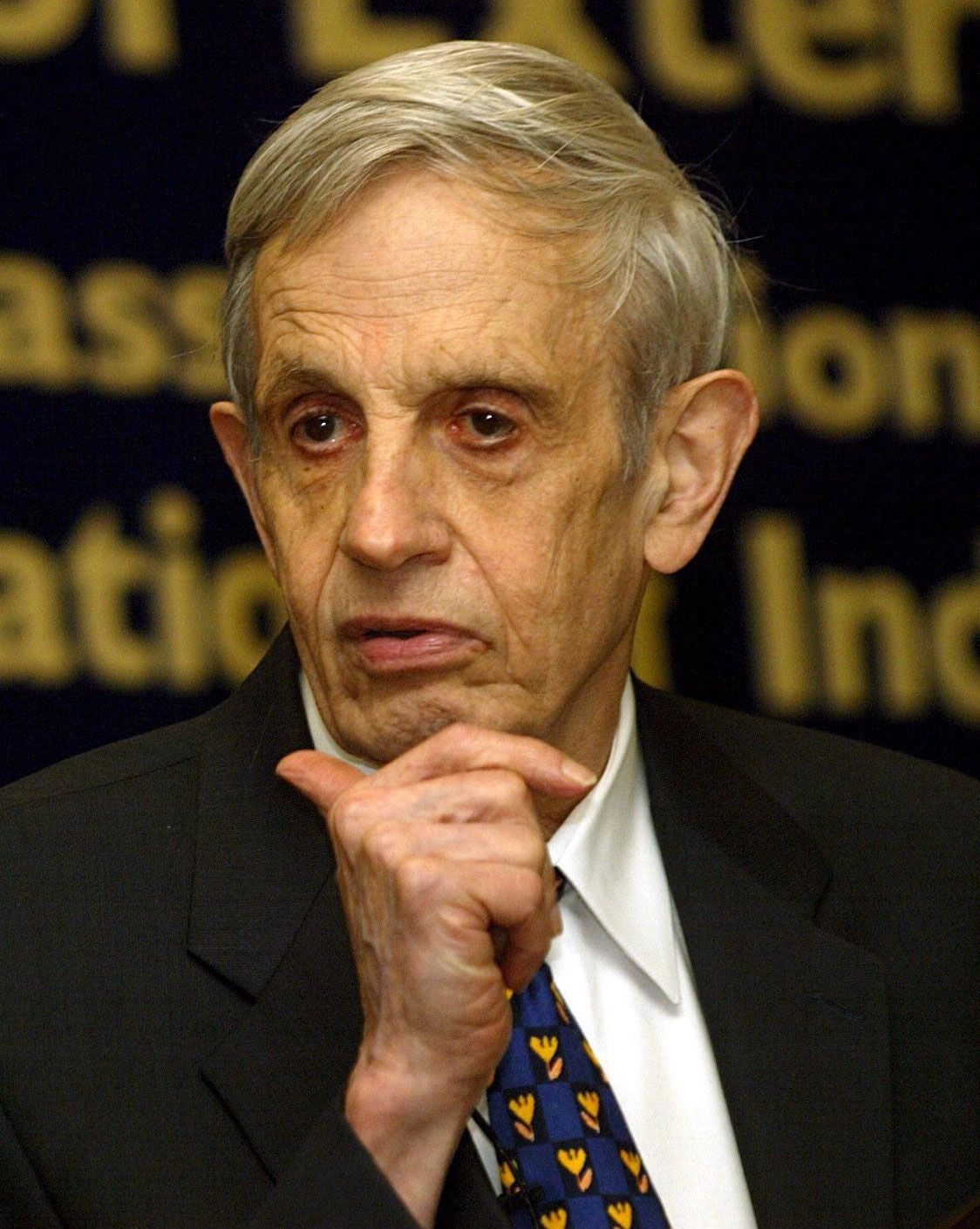John F. Nash : A Beautiful Mind

John Forbes Nash, Jr. is an American mathematician who is known for his very revolutionary “Nash Equilibrium” and work in Game Theory. His works in Game Theory, Differential Geometry, and Partial Differential Equations have provided insight into the forces that govern chance and events inside complex systems in daily life. His theories are used in market economics, computing, evolutionary biology, artificial intelligence, accounting, politics and military theory. Serving as a Senior Research Mathematician at Princeton University during the latter part of his life, he shared the 1994 Nobel Memorial Prize in Economic Sciences with game theorists Reinhard Selten and John Harsanyi.
Nash was born on June 13, 1928, in Bluefield, West Virginia. John Nash was a singular little boy, solitary and introverted. He seems to have shown a lot of interest in books when he was young but little interest in playing with other children.
He attended Bluefield College and Carnegie Institute of Technology (now Carnegie Mellon University) with a full scholarship. After graduating in 1948 with bachelor of science and master of science degrees in mathematics, he accepted a scholarship to Princeton University, the mathematical centre of the universe, where he pursued his graduate studies in Mathematics. In Princeton where he showed an interest in a broad range of pure mathematics: topology, algebraic geometry, game theory and logic were among his interests but he seems to have avoided attending lectures. Usually those who decide not to learn through lectures turn to books but this appears not to be so for Nash, who decided not to learn mathematics “second-hand” but rather to develop topics himself. In many ways this approach was successful for it did contribute to him developing into one of the most original of mathematicians who would attack a problem in a totally novel way.
Nash earned a doctorate in 1950 with a 27-page dissertation on non-cooperative games. The thesis, which was written under the supervision of Albert W. Tucker, contained the definition and properties of what would later be called the “Nash equilibrium”. It’s a crucial concept in non-cooperative games, and won Nash the Nobel prize in economics in 1994.
Nash worked on ideas that would appear in his paper ‘Continuity of solutions of parabolic and elliptic equations’ which was published in the American Journal of Mathematics in 1958. Nash, however, was very disappointed when he discovered that Ennio De Giorgi had proved similar results by completely different methods. The outstanding results which Nash had obtained in the course of a few years put him into contention for a 1958 Fields’ Medal but since his work on parabolic and elliptic equations was still unpublished when the Committee made their decisions he did not make it.
Nash experienced the first symptoms of mental illness in early 1959. Nash’s wife, Alicia admitted Nash to the McLean Hospital for schizophrenia in 1959. In Princeton, John’s illness continued, transforming him into a frightening figure. He spent most of his time hanging around on the Princeton campus, talking about himself in the third person as Johann von Nassau, writing nonsensical postcards and making phone calls to former colleagues. In January 1961 the despondent Alicia, John’s mother, and his sister Martha made the difficult decision to commit him to Trenton State Hospital in New Jersey where he endured insulin-coma therapy, an aggressive and risky treatment, five days a week for a month and a half. Slowly over many years Nash recovered. He delivered a paper at the tenth World Congress of Psychiatry in 1996 describing his illness. He was described in 1958 as the: “… most promising young mathematician in the world …” Despite spending periods in hospital because of his mental condition, his mathematical work continued to have success after success. He said: “I would not dare to say that there is a direct relation between mathematics and madness, but there is no doubt that great mathematicians suffer from maniacal characteristics, delirium and symptoms of schizophrenia.”
In the 1990s Nash made a recovery from the schizophrenia from which he had suffered since 1959. His ability to produce mathematics of the highest quality did not totally leave him. He said: “I would not treat myself as recovered if I could not produce good things in my work.”
In 1994, at the age of 66, John Nash received the Nobel Prize in Economics in Stockholm, Sweden, for his work on Game Theory. Nash has returned to an office at Princeton, where he continues to explore mathematics, the world in which he first succeeded, the world that carried him during his debilitating illness, and the world that has embraced him again.
Dhiraj Sharma